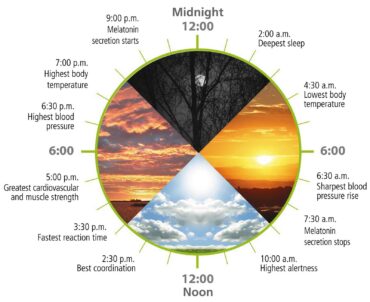
(Photo courtesy OMS Lighting)
Human Centric Lighting
Human-centric lighting (HCL) is the art and science of designing interior lighting systems that mimic natural light, be it daylight or darkness. Exposure to the “right” light can render a positive biological impact on the master clock in your brains and in turn, your circadian rhythms. The net objective of HCL is improved occupant comfort, mood and productivity in indoor spaces that support healthy circadian rhythms.
According to Alexander Ding, MD, “The natural 24-hour cycle of light and dark helps maintain alignment of circadian biological rhythms along with basic processes that help our bodies to function normally.” Conversely, “excessive exposure to nighttime lighting disrupts these essential processes and can create potentially harmful health effects and hazardous situations.” The American Medical Association recognizes that exposure to excessive light at night can disrupt sleep and cause unsafe driving conditions.
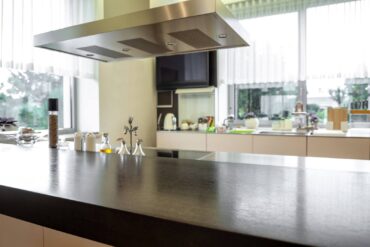 Circadian rhythms are physical, mental and behavioral changes that follow a 24-hour cycle of day and night or, more specifically, daylight and darkness. When your circadian rhythms are aligned with light transitions of day to night and back again, via stimulus from natural or specifically designed artificial light, you will generally experience better concentration (performance), mood, comfort and sleep — all of which add up to health and wellness.
Circadian rhythms are physical, mental and behavioral changes that follow a 24-hour cycle of day and night or, more specifically, daylight and darkness. When your circadian rhythms are aligned with light transitions of day to night and back again, via stimulus from natural or specifically designed artificial light, you will generally experience better concentration (performance), mood, comfort and sleep — all of which add up to health and wellness.
Healthy daily bodily functions, such as the production and secretion of vital hormones including dopamine for mood and focus (productivity) and melatonin for sleep, are directly affected by a person’s circadian rhythms. It’s important to note that it’s not specifically exposure to natural light, but rather exposure to the correct color temperature (CCT) of light, or light spectrum, that supports circadian rhythms.
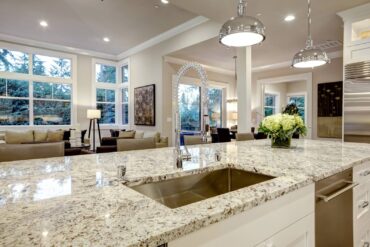 Color temperatures of light were measured and documented in 1848 by William Kelvin. As dawn breaks, individuals typically experience a warm, yellowish light, which is measured in Kelvin temperature units of 2,000-3,000 K. As the day progresses, natural light transitions into a blue light, which generally ranges from 4,000 to 7,000 K. The transition of morning light signals your body that it should stop secreting melatonin, allowing you to wake up.
Color temperatures of light were measured and documented in 1848 by William Kelvin. As dawn breaks, individuals typically experience a warm, yellowish light, which is measured in Kelvin temperature units of 2,000-3,000 K. As the day progresses, natural light transitions into a blue light, which generally ranges from 4,000 to 7,000 K. The transition of morning light signals your body that it should stop secreting melatonin, allowing you to wake up.
Toward sunset, the color temperature of natural light reverts back to a lower Kelvin, producing beautiful yellow, orange and pink sunsets — and the release of melatonin in your body. Inadequate exposure to correct color temperature of light can disrupt your circadian rhythm and create an increased risk of developing depression, sleep disorders, poor eating habits and different diseases.
 Recessed can lights in the kitchen with 2700 K bulbs may be adequate for brewing your morning coffee, but research has shown that they’re insufficient at providing the daytime circadian light signals the body needs when you’re working from home at the kitchen countertop.
Recessed can lights in the kitchen with 2700 K bulbs may be adequate for brewing your morning coffee, but research has shown that they’re insufficient at providing the daytime circadian light signals the body needs when you’re working from home at the kitchen countertop.
From early Homo sapiens to the beginning of the industrial age, people worked in tandem with natural light cycles. Today, most work and learn under artificial light, which is static (doesn’t change in color temperature) and is too dim during the workday and too strong at night, disrupting circadian rhythms. HCL can create a stable circadian rhythm, resulting in an improvement in your mental health, ability to learn, healing in hospital settings and a reduction of accidents and mistakes in the workplace.
 Unlike Vitamin D and K production in the human body, exposure of your skin to sunlight is not required for healthy circadian rhythms, but rather for the human eye. A special photopigment in the eye, melanopsin, communicates with the master clock in the human brain, setting the course for your circadian rhythms. Melanopsin is most sensitive to high Kelvin light, equal to blue sky or midday light.
Unlike Vitamin D and K production in the human body, exposure of your skin to sunlight is not required for healthy circadian rhythms, but rather for the human eye. A special photopigment in the eye, melanopsin, communicates with the master clock in the human brain, setting the course for your circadian rhythms. Melanopsin is most sensitive to high Kelvin light, equal to blue sky or midday light.
Melanopsin transmits nonvisual information to the master clock in the brain, supporting healthy circadian rhythms. Traditional light bulbs, as well as standard white LEDs (light emitting diodes), are not as effective at targeting melanopsin or providing a sufficient circadian signal to the brain. This means that the lighting installed in most indoor spaces is insufficient for human health and wellness.
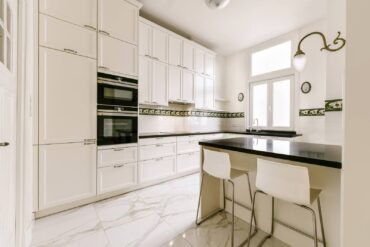 Using Smart Technology
Using Smart Technology
Despite that fact that most people spend nearly 90 percent of their day indoors, with limited exposure to natural light, humans are not doomed to disrupted circadian rhythms. Scientific studies have determined that “tuning” correlated color temperature (CCT), LED white lights with smart home technology can simulate ascending and descending Kelvin levels through the course of the day, turning blue light to yellow light and back again.
Recently developed, spectrally optimized LEDs can be adjusted to various shades of white to replicate the CCTs, simulating the changes in natural daylight with its visual, biological and emotional effects, because they target melanopsin, the photopigment in the eye that sends signals to the brain to regulate your internal clock. Spectrally optimized LEDs are designed specifically with the circadian system in mind and can create a white light, providing high daytime circadian stimulus without changing the color of the light throughout the day. The actual LED bulbs (luminaires) are controlled by an intelligent control system programed for appropriate light profiles.
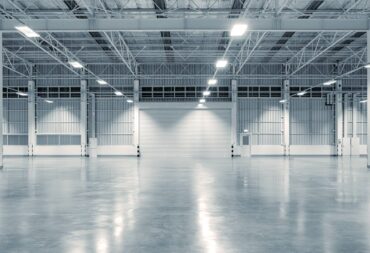 Combining HCL with smart technology, such as the Darwin system by Delos, allows you to customize a lighting system that controls the lighting in an entire home or individual spaces by using an app on a smart phone or another device. Smart technology platforms communicate with the connected LED fixtures, signaling them to change color and intensity to target the eye’s melanopsin with the intention of supporting your circadian rhythms.
Combining HCL with smart technology, such as the Darwin system by Delos, allows you to customize a lighting system that controls the lighting in an entire home or individual spaces by using an app on a smart phone or another device. Smart technology platforms communicate with the connected LED fixtures, signaling them to change color and intensity to target the eye’s melanopsin with the intention of supporting your circadian rhythms.
The benefits and options of HCL are many. For example, they help you to tune your circadian rhythm gradually to another time zone prior to travel to mitigate jetlag, or help you wake up when it’s dark outside to mitigate seasonal affective disorder (SAD).
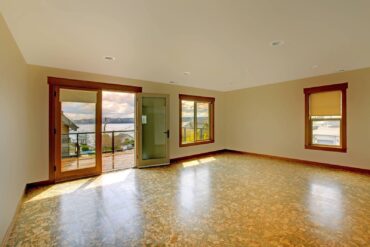
When applied correctly, HCL can provide a holistic, application-oriented approach to lighting, which helps balance your visual, emotional and natural biological needs while simultaneously saving energy and reducing your carbon footprint.
Designing and installing HCL systems is not really a DIY project; therefore, look for professional integrators specializing in smart home technology platforms. If your lighting budget is finite, consider controlling the most-used rooms of the home first and expanding as your financial resources allow.
Creating Comfort
The fourth cornerstone of health and wellness is comfort. “Comfort” comes in many forms and is generally considered very specific to each individual. However, it’s fair to say that no one likes to be uncomfortable and that feeling comfortable is directly correlated with being physically relaxed, contented and free of pain, anxiety or other unpleasant sensations. Light, temperature and sound are comfort factors that impact mood and a general sense of wellbeing.
 It’s fair to say that most people thrive when exposed to natural light, both inside and out of doors. Numerous studies have shown that students in classrooms with large windows (especially ones that can be opened) generally have higher levels of concentration and retention of learning materials. Hospital patients who are placed next to a window often heal or recover faster and show a general sense of hope. Office workers have been found to be more creative and productive when their workstation is near a window.
It’s fair to say that most people thrive when exposed to natural light, both inside and out of doors. Numerous studies have shown that students in classrooms with large windows (especially ones that can be opened) generally have higher levels of concentration and retention of learning materials. Hospital patients who are placed next to a window often heal or recover faster and show a general sense of hope. Office workers have been found to be more creative and productive when their workstation is near a window.
In conjunction with HCL, the temperature of natural light is also important. From dawn’s light to dusk, humans relish the beauty of the changing light throughout the day. Therefore, designing, building and renovating with increased daylight in mind is important and can be achieved by increasing the size and quantity of windows, glass doors and skylights.
However, understand that light “bounces.” Polished-stone countertops and floors, high-gloss wall paint, stainless steel appliances and high-gloss cabinetry are all materials that can cause light to bounce, creating glare. You can mitigate glare with the careful selection of low-sheen materials, as well as window coverings. Suffice it to say, it’s not comfortable to prepare lunch in a kitchen where the counters and cabinetry create a lot of glare.
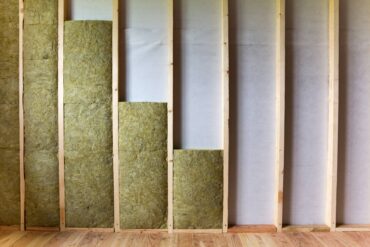
Similar to the temperature of light, indoor air temperature has a direct impact on your sense of comfort. Studies have shown that adult men and women “run” very differently with regards to temperature. Men run hotter and women run cooler. In office environments, this can create comfort issues due to the fact that most office heating-and-cooling systems are set at a static temperature throughout the space, so it’s difficult to make all workers comfortable simultaneously.
Additionally, people subconsciously expect variations in temperature as they experience variations in light. At sunrise, they expect the environment to feel cooler, as if they’re outside; as midday approaches, they expect their environment to feel, in relative terms, warmer.
The natural body processes are adversely impacted by the lack of variation or stagnation, with standard heating-and-cooling systems triggering fatigue, lack of motivation, errors and reduced productivity in some people. Zoning a heating-and-cooling system, installing programable thermostats that are easy to operate, and using operating windows are ways to improve occupant comfort with respect to temperature.
Sudden, constant or gratuitous noise can have a profound impact on your sense of comfort. Not only do you feel the impact directly on your ears but also on your emotions, as unwanted or unexpected sound can be difficult for the brain to process. Noise pollution is only second to air pollution as a silent killer.
Some ways to mitigate noise in the built environment include:
- Insulating interior walls with noise-abating wall insulation
- Installing sound-reduction drywall or a double layer of drywall
- Installing decorative, acoustic wall and ceiling panels
- Installing triple-paned windows
- Sizing and installing ventilation fans properly to reduce “friction” and therefore noise
- Selecting softer interior surfaces, such as cork or carpeted floors, that absorb rather than bounce sound
- Replacing hollow-core doors with solid-core ones
- Dropping a vaulted ceiling — not only will this reduce noise but also your forced-air heating bill.






























